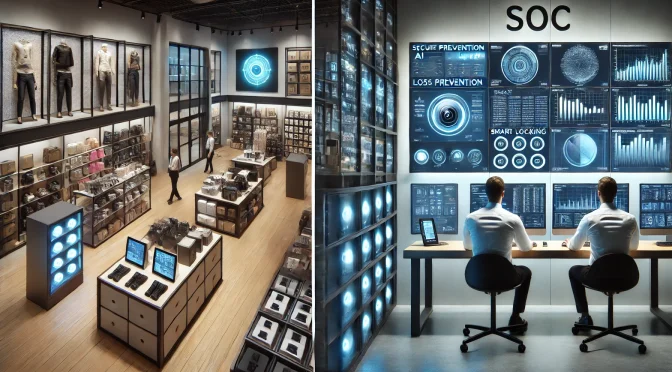
By Hedgie Bartol, LPQ, LPC
Another year, another chance for retailers to get ahead—or get left behind. The world of loss prevention is evolving fast, and 2025 is shaping up to be a year where only the smartest, most adaptive strategies will win. Retailers are facing everything from AI-powered theft to digital fraud, and the right approach is no longer just about locking up merchandise—it’s about using technology and intelligence to outmaneuver criminals. Let’s dive into the trends shaping the future of loss prevention.
1. AI and Machine Learning: The New Frontline of Loss Prevention
AI isn’t just a fancy term your IT team throws around to sound impressive anymore—it’s the backbone of modern loss prevention. From real-time anomaly detection to predictive analytics, AI-powered surveillance is changing the game. We’re talking about smarter, faster responses to potential theft before it even happens. Imagine a system that can spot sketchy behavior and flag it faster than your best store detective—without taking a coffee break.
2. Computer Vision: Watching Over More Than Just Shoplifters
Cameras aren’t just there to record bad decisions anymore; they’re actively helping prevent them. Today’s computer vision solutions track everything from customer movements to shelf conditions, giving retailers insights that improve both security and sales. False alarms? Reduced. Customer experience? Improved. These systems aren’t just about loss prevention—they’re about running a smarter, more efficient store.
3. Organized Retail Crime: Smarter Criminals, Smarter Solutions
If you think ORC is the same old smash-and-grab game, think again. These criminals are evolving, and so are the solutions to stop them. Retailers are linking theft incidents across multiple locations, working more closely with law enforcement, and using smarter deterrents. Case in point: modern locking solutions aren’t just securing products, they’re capturing data on repeat offenders. This isn’t just about stopping theft—it’s about fighting crime with intelligence.
4. The Locking Dilemma: When Security Hurts Sales
Here’s the elephant in the room: locking up products keeps them safe, but it also drives customers away. Even Walgreens’ CEO admitted it’s hurting sales. So what’s the answer? Smarter locks that deter theft without turning your store into a fortress. Self-service locking cases let customers access products securely without waiting for an associate. The future isn’t about locking everything up—it’s about keeping products accessible while making theft a real pain for the bad guys.
5. Automation: The Rise of the Smart Store
RFID, smart lockers, automated deterrents—they all help keep inventory where it belongs. But let’s not forget the human element. The best AP strategies combine automation with well-trained employees who know how to work alongside the technology. A self-checkout system with built-in theft deterrents is great, but it’s even better when an alert, well-trained associate is keeping an eye on things too.
6. Omni-Channel Fraud: Digital Theft Meets Brick-and-Mortar
Fraudsters are exploiting every retail channel, from online to in-store. Take BOPIS (Buy Online, Pick Up In-Store) fraud, where criminals use stolen credit card information to place orders online and pick them up before the fraud is detected. Return scams are another growing problem, with tactics like wardrobing, where shoppers buy clothes, wear them once, and return them for a full refund. Online order abuse includes everything from fake chargebacks—where customers falsely claim a package never arrived—to coupon stacking loopholes that retailers struggle to close.
To fight back, retailers need layered security measures. Multi-factor authentication (MFA) can prevent account takeovers, while AI-driven fraud detection can flag suspicious buying patterns in real time. Behavioral analytics can identify trusted shoppers, allowing them to bypass unnecessary security checks while keeping fraudsters at bay. The right mix of technology and human oversight, like trained fraud analysts reviewing high-risk transactions, can protect profits without adding unnecessary barriers to the shopping experience.
7. Intelligence Sharing: The Power of Teamwork
Loss prevention isn’t a solo sport anymore. More than ever, retailers, law enforcement, and solution providers are sharing intel to stay ahead of bad actors. Cloud-based case management, shared ORC databases, and real-time alerts mean no one has to fight this battle alone. If you’re not plugged into a broader network, you’re fighting with one hand tied behind your back.
Final Thoughts
2025 is the year to get serious about loss prevention. If you’re not evolving, you’re falling behind. Loss prevention isn’t just about catching shoplifters anymore—it’s about using technology, data, and strategy to stay one step ahead. Whether it’s AI, smarter locks, or better collaboration, the future of retail security is proactive, not reactive. The real question is: are you ready to keep up?